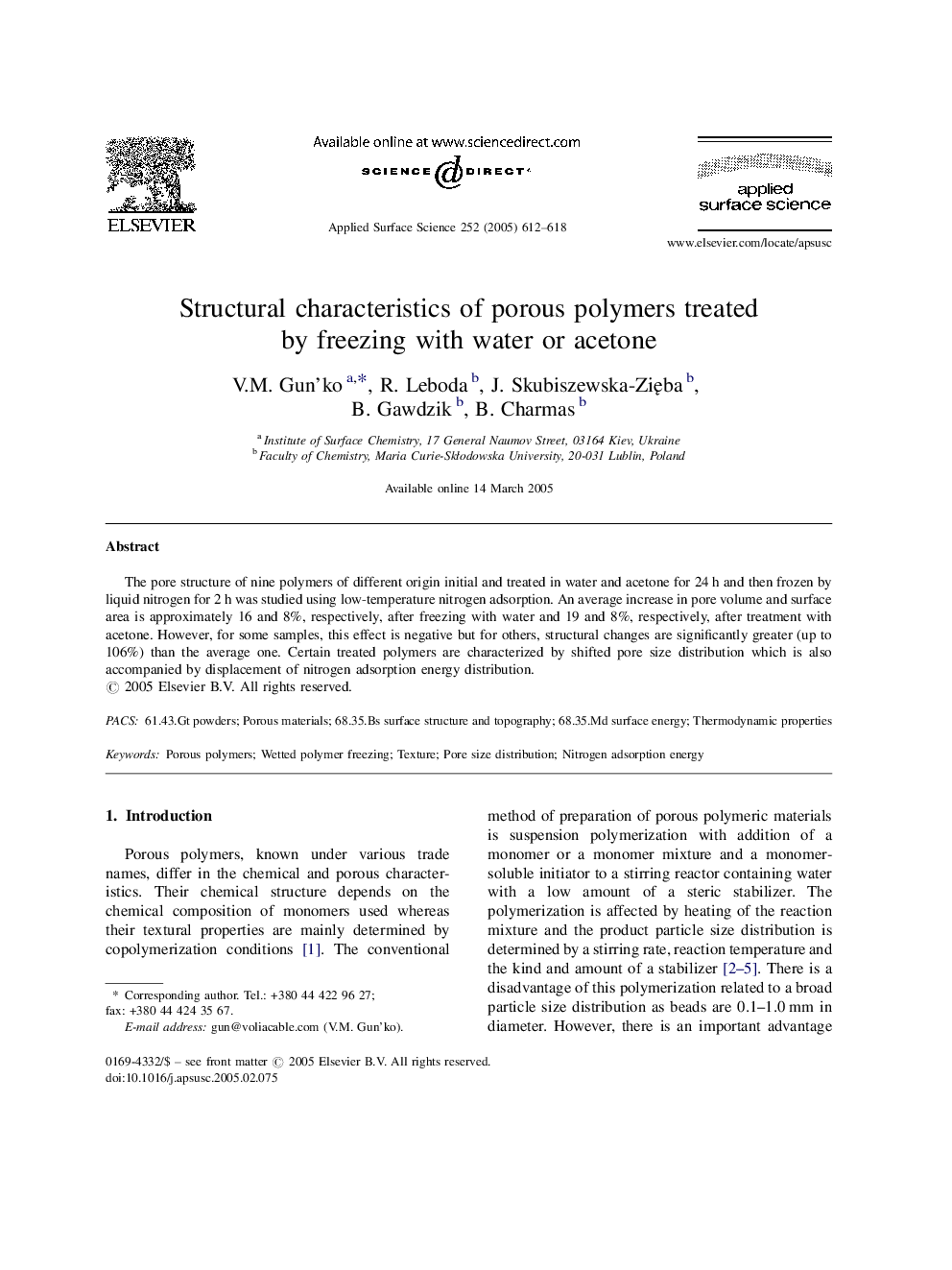| Article ID | Journal | Published Year | Pages | File Type |
|---|---|---|---|---|
| 9566739 | Applied Surface Science | 2005 | 7 Pages |
Abstract
The pore structure of nine polymers of different origin initial and treated in water and acetone for 24Â h and then frozen by liquid nitrogen for 2Â h was studied using low-temperature nitrogen adsorption. An average increase in pore volume and surface area is approximately 16 and 8%, respectively, after freezing with water and 19 and 8%, respectively, after treatment with acetone. However, for some samples, this effect is negative but for others, structural changes are significantly greater (up to 106%) than the average one. Certain treated polymers are characterized by shifted pore size distribution which is also accompanied by displacement of nitrogen adsorption energy distribution.
Keywords
Related Topics
Physical Sciences and Engineering
Chemistry
Physical and Theoretical Chemistry
Authors
V.M. Gun'ko, R. Leboda, J. Skubiszewska-ZiÄba, B. Gawdzik, B. Charmas,
